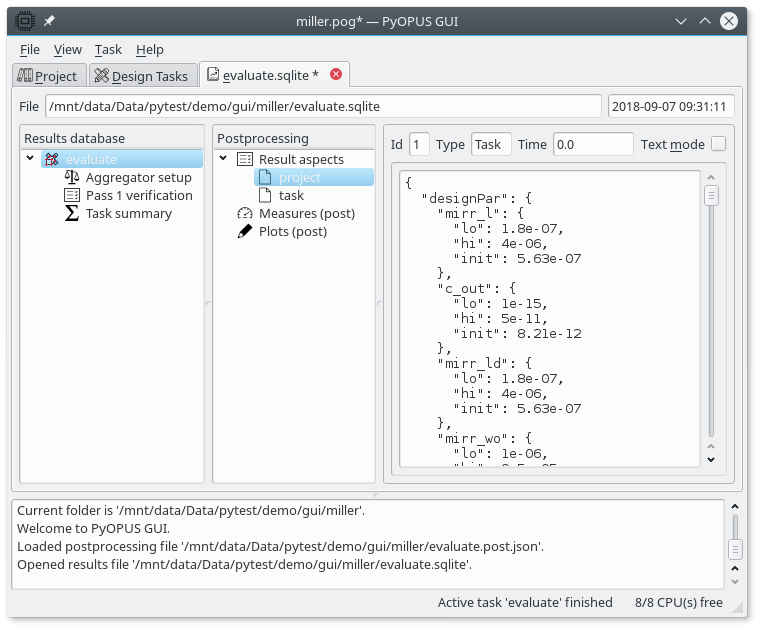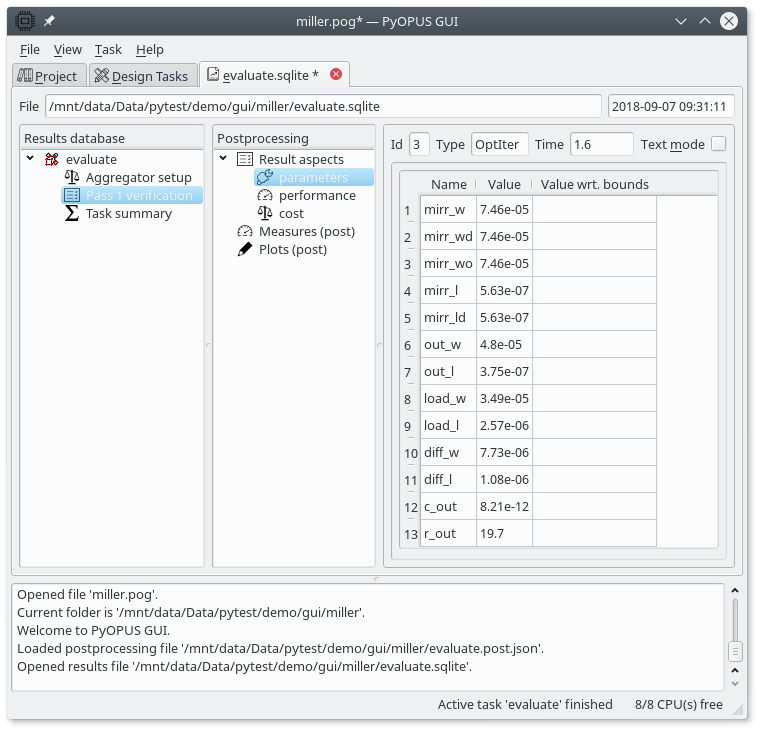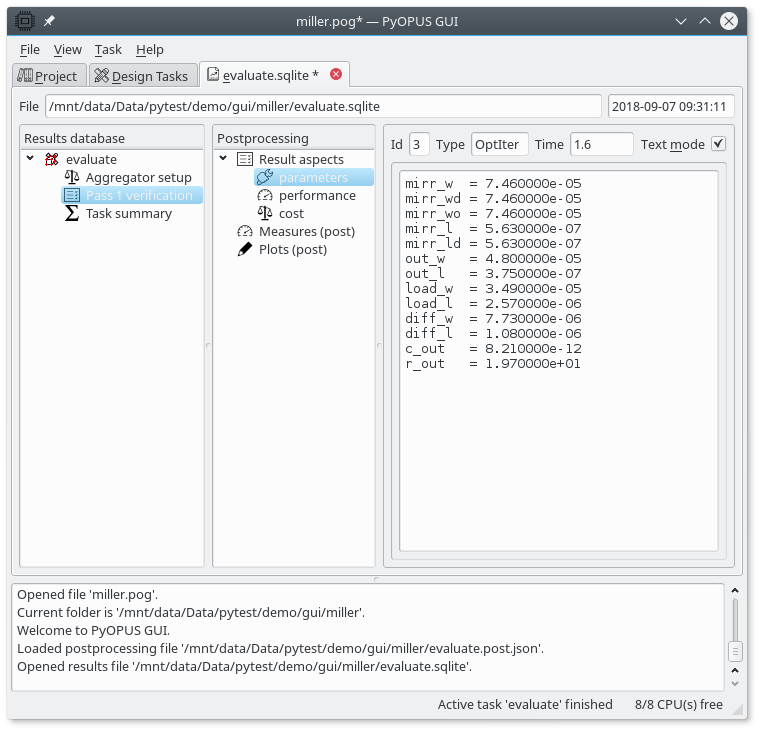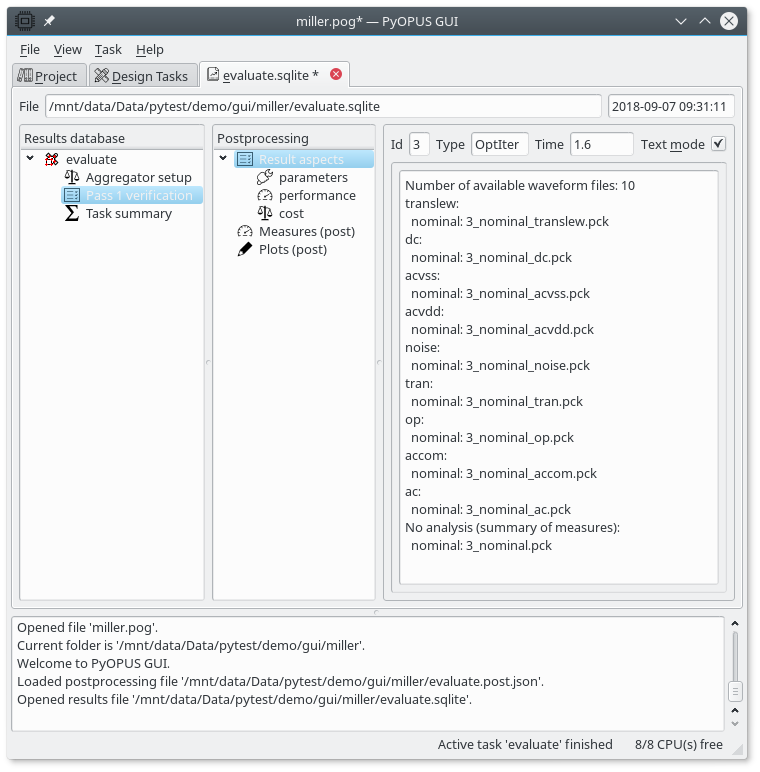11.4.1. Opening and browsing the results¶
As soon as the task is started it begins to generate intermediate results and
stores them in a file evaluate.sqlite in the project folder which is a
sqlite database. The results database of the active task can be opened by
selecting Task/View results in the main menu. This opens a tab which displays
the contents of the database in form of a tree.

GUI displaying the results database of the simple evaluation task. The “evaluate” task node’s project aspect is displayed in the right half of the tab.¶
The top of the results tab displays the path to the database file and the timepoint when the database was created. The display is updated as new data is added to the database. The database is organized as a tree. Every node in the tree can have one or more aspects holding various data. The tree is displayed in the left part of the tab (Results database). The available aspects, posprocessing performance measures, and postprocessing plots for the selected result node are listed in the middle part of the tab (Postprocessing). The data corresponding to the selected aspect are displayed in the right part of the tab.
The top of the aspect display lists the result node ID, type, and time the node was created (relative to log start). In some cases there is also a checkbox titled “Text mode”. When checked the results are displayed as text.
Our results database has 4 result nodes. The first one (evaluate) holds the
task definition. It has two aspects (project and task). They are JSON
encoded descriptions of the project and task dumped to the runme.py file.
The Aggregator setup node holds no data. This is due to the fact that we did not define any performance measures and consequently haven’t set any design requirements based on these measures.
The “Pass 1 verification” node (which is an optimization iteration node) holds the actual results of the circuit evaluation. It has three aspects (parameters, performance, and cost). The performance and cost apects are empty because we did not define any performance measures is the project/task. The parameters aspect holds the values of the design parameters for which the circuit was evaluated.

The design parameter values stored in an optimization iteration node.¶

The design parameter values displayed as text.¶
The task summary node is the last node in the tree. It holds some stats on the task like the number of performed analyses and the task’s duration.

The task summary node.¶
For every result node in the database a set of waveforms is possibly stored
by PyOPUS in the waveforms.pck subfolder of the task folder. To see if
any waveforms are available select the “Result aspects” node in the
Postprocessing tree. A list of waveform files is displayed in the right half
of the tab.

Viewing the list of available waveform files.¶